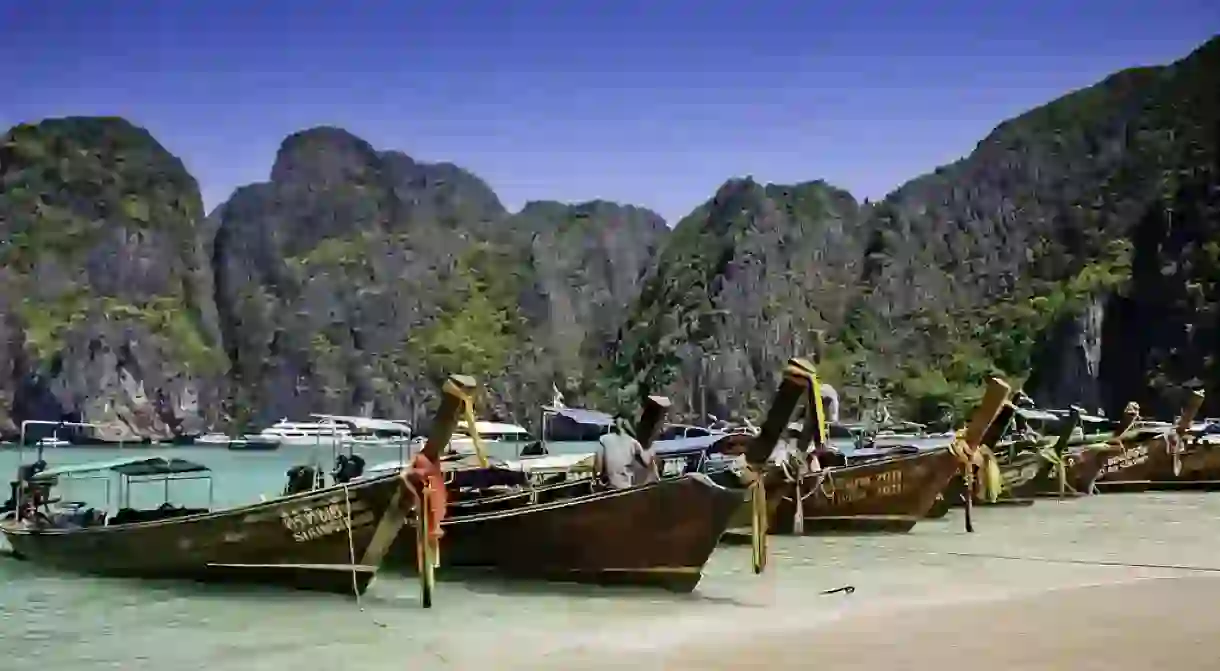This Beach in Thailand is Set To Soon Restrict Tourists

Maya Bay is a picturesque cove that gained international fame as the setting of Danny Boyle’s 2000 film The Beach, featuring Leonardo DiCaprio and Tilda Swinton, and adapted from Alex Garland’s novel. The sheltered lagoon, enclosed by 100-metre high cliffs, is an ideal setting for Garland’s story of an adventurer seeking peace from the idyllic retreat.
Today, the almost 5,000 daily visitors to Maya Bay have contributed to the area’s eroding natural beauty, threatening local marine wildlife and sustainability of the ecosystem. Issues like boat anchoring, an excess of pollutants and sunscreen, and irresponsible tourist behaviors have led to a major decline of the coral reef system in the area, according to Andrew Hewett, a spokesperson for the Phi Phi Island Conservation and Preservation Group and manager of The Adventure Club, a local dive centre active in conservation projects.

Marine experts from Bangkok’s Kasetsart University estimate nearly 80 percent of coral reefs in Thailand’s waters have been damaged or threatened due to heavy tourism, and the Thai government has committed to implementing measures to curb its impact. In 2016, popular Similan Island Koh Tachai was closed for around a six-month period to help the ecosystem recover, and while it has since re-opened, restrictions remain in place to limit the unsustainable numbers of visitors the area once tolerated.

Soon, Maya Bay will face similar restrictions. While not permanently closing, contrary to many news reports, visits to the bay will be greatly restricted. However, tourists will still be able to visit the beach through access by Loh Samah Bay, which locals fear may only increase damage to that side of the island.
“[The restrictions] can only have a positive effect if restrictions are followed up by other implementation of Thai Laws in regards to protecting coral reefs and local marine life,” explains Hewett, who said that a date to initiate the restrictions has not yet been set. “If all the boats that are usually going into Maya Bay are now to go into Loh Samah Bay then I can see there being a negative impact on the coral reef in that bay unless preparations are made to receive the additional boat traffic in that bay.”

The news has triggered a conversation about responsible tourism in the Southern Thai islands. Conservationists like Hewett suggest that visitors can greatly reduce their impact and contribute to local conservation by educating themselves on how to snorkel properly and choosing responsible boat operators that provide proper training and do not drop anchors to moor. He insists that understanding the fragility and importance of corals is critical to enjoying their natural beauty. Additionally, damage to coral reefs by tourists can result in heavy fines, imprisonment, or both.
Phi Phi Don is the main island that provides access to Maya Bay and other nearby islands, and the local population is committed to preserving their natural paradise. Visitors are welcome to contribute to this initiative by giving a few hours time to participate in island-wide and underwater cleanups on the 10th, 20th, and 30th of each month with the Phi Phi Island Conservation and Preservation Group. The Adventure Club, a dive and conservation centre on Phi Phi, also manages a number of artificial reefs throughout the region, intended to help stimulate local coral reef recovery, and can advise on responsible tour operators in the area.

While Maya Bay remains a main draw to the area, Hewett says there are other lesser known but equally amazing locations to visit like Pileh Bay, or the west side of Phi Phi Don such as Yongkasem Bay, Wang Long Bay, and Nui Bay.













